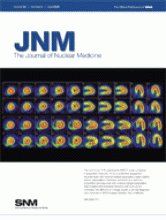Abstract
Attenuation correction (AC) of whole-body PET data in combined PET/MRI tomographs is expected to be a technical challenge. In this study, a potential solution based on a segmented attenuation map is proposed and evaluated in clinical PET/CT cases. Methods: Segmentation of the attenuation map into 4 classes (background, lungs, fat, and soft tissue) was hypothesized to be sufficient for AC purposes. The segmentation was applied to CT-based attenuation maps from 18F-FDG PET/CT oncologic examinations of 35 patients with 52 18F-FDG–avid lesions in the lungs (n = 15), bones (n = 21), and neck (n = 16). The standardized uptake values (SUVs) of the lesions were determined from PET images reconstructed with nonsegmented and segmented attenuation maps, and an experienced observer interpreted both PET images with no knowledge of the attenuation map status. The feasibility of the method was also evaluated with 2 patients who underwent both PET/CT and MRI. Results: The use of a segmented attenuation map resulted in average SUV changes of 8% ± 3% (mean ± SD) for bone lesions, 4% ± 2% for neck lesions, and 2% ± 3% for lung lesions. The largest SUV change was 13.1%, for a lesion in the pelvic bone. There were no differences in the clinical interpretations made by the experienced observer with both types of attenuation maps. Conclusion: A segmented attenuation map with 4 classes derived from CT data had only a small effect on the SUVs of 18F-FDG–avid lesions and did not change the interpretation for any patient. This approach appears to be practical and valid for MRI-based AC.
Footnotes
-
COPYRIGHT © 2009 by the Society of Nuclear Medicine, Inc.







